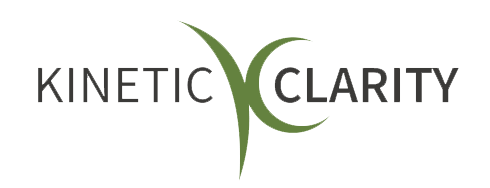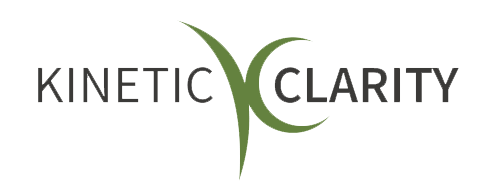What Unresolved Conflict Does to a Workplace
In any professional setting, diverse individuals come together with varied backgrounds, opinions, and approaches to their work.

In any professional setting, diverse individuals come together with varied backgrounds, opinions, and approaches to their work. While this diversity can be a source of innovation and growth, it can also lead to inevitable clashes.
If not addressed timely, these disagreements can snowball into larger issues, impacting the overall health of the organization. Let's delve into the repercussions of letting conflict linger in the workplace.
Work Disruptions
Just like a stone in a shoe can disrupt a long walk, unresolved conflicts can disrupt the daily flow of work. Each team member has a role, and the group's performance depends on everyone moving in sync. However, unresolved conflicts cause unexpected missteps in the rhythm of the office. This atmosphere of uncertainty and tension can bring down the energy of the whole team, causing unnecessary delays and inefficiencies.
Distraction from Core Tasks
Unresolved conflicts are akin to background noise that keeps growing louder. Team members can find it increasingly challenging to concentrate on their primary responsibilities when there's tension in the air. Instead of focusing on tasks, time might be spent ruminating on disagreements or discussing the issue with peers. This detracts from the hours available for productive work.
Decision-making Delays
When team members are in conflict, even simple decisions can become complicated. Every discussion becomes an opportunity for the underlying disagreement to resurface. As a result, meetings may run longer, decisions may be postponed, and projects may stall. This kind of delay can have domino effects, causing delays in other departments or parts of the project.
Increased Supervisory Involvement
With the rise of tensions, supervisors and managers might find themselves more involved in day-to-day team dynamics than they ideally should be. Instead of focusing on strategy and guidance, they may need to act as mediators, which can slow down other processes and affect the department's overall growth.
A Decline in Productivity
Productivity is the heart of an organization's success. When a team is in harmony, productivity soars, tasks get completed efficiently, innovation thrives, and milestones are achieved ahead of time.
However, when conflict casts its shadow, the once smoothly operating engine of productivity begins to stutter. Let's dissect how unresolved conflicts lead to this decline:
Lack of Motivation
A persistent conflict can erode the enthusiasm and drive of team members. When employees feel that their opinions are not valued or believe that they have to constantly be on guard, their intrinsic motivation dwindles. They might start doing just the minimum required, avoiding taking on additional responsibilities or showing initiative, ultimately affecting the overall output.
Breakdown in Communication
Clear and open communication is the cornerstone of productivity. Unresolved conflicts often result in team members avoiding conversations, withholding crucial information, or misinterpreting messages. This breakdown can lead to errors, repeated tasks, or tasks being completely overlooked.
Decreased Morale
The overall mood and morale of a team can significantly impact its productivity. In a conflicted environment, the general energy is low, leading to a lack of enthusiasm for tasks. Employees might dread coming to work, leading to lackluster performances and a lack of commitment to excellence.
Inefficient Use of Resources
When conflicts are unresolved, teams may not always make the best use of available resources. For instance, two team members in disagreement might both want control over a particular resource, leading to duplication of effort. Or, in an attempt to sidestep conflict, they might avoid using certain resources altogether, leading to underutilization.
Increased Error Rate
A distracted mind, one that's preoccupied with interpersonal tensions, is more prone to making mistakes. Whether it's overlooking crucial data, misinterpreting client requests, or simply making calculation errors, the ripple effect of these mistakes can be vast, leading to rework and further loss of productivity.
The Risk of Project Failure
Collaboration is at the heart of most successful projects. When team members are not aligned or harbor resentment due to unresolved issues, staying on track is challenging. Projects require clear communication, mutual respect, and shared vision. Conflict can cloud judgment and prevent these essential elements from taking root. This can take many forms.
Misaligned Goals and Objectives
Every project has a set of defined goals and objectives. However, individual agendas might overshadow these shared goals when team members conflict. Members might prioritize proving a point or furthering their perspective over the broader project goals, leading to misaligned efforts and wasted energy.
Decreased Trust Among Team Members
Trust is a crucial element in project success. When conflicts persist, this trust can erode. Team members might second-guess each other's intentions or decisions, leading to hesitance in delegating tasks or sharing responsibilities. This lack of trust can significantly slow down the project's momentum.
Resource Mismanagement
Projects often require a delicate balancing act of resources – from staffing to technology and budget. Unresolved conflicts can lead to poor resource allocation decisions, with team members possibly hoarding resources or not utilizing them efficiently out of spite, misunderstanding, or lack of coordination.
Stifled Innovation and Creativity
Many projects thrive on innovative solutions to complex challenges. However, in a conflict-ridden environment, team members might hold back their creative ideas out of fear of ridicule or to avoid further disagreements. This withholding of fresh perspectives can mean the difference between a project's success and failure.
Erosion of Team Cohesiveness
A harmonious team often collaborates spontaneously, sharing ideas and brainstorming solutions together. However, this spirit of spontaneous collaboration diminishes when there's unresolved conflict. Employees may become hesitant to approach one another, leading to siloed work patterns.
For a project to be successful, the team needs to function as a cohesive unit, supporting and complementing each other's efforts. Prolonged conflicts can fracture this unity, leading to isolated efforts, lack of mutual support, and an "every person for themselves" mentality.
Taking Steps Towards Harmony
While the consequences of unresolved conflict can be daunting, it's essential to remember that every workplace has the potential for disagreements. The key is how they're addressed. Encouraging open communication, fostering an environment of respect, and actively promoting team building can go a long way in ensuring that minor disagreements don't escalate into major problems.
The health of a workplace depends mainly on the harmony of its team. By recognizing the signs of unresolved conflict and taking proactive steps to address them, organizations can cultivate a thriving, productive, and joyful work environment.












